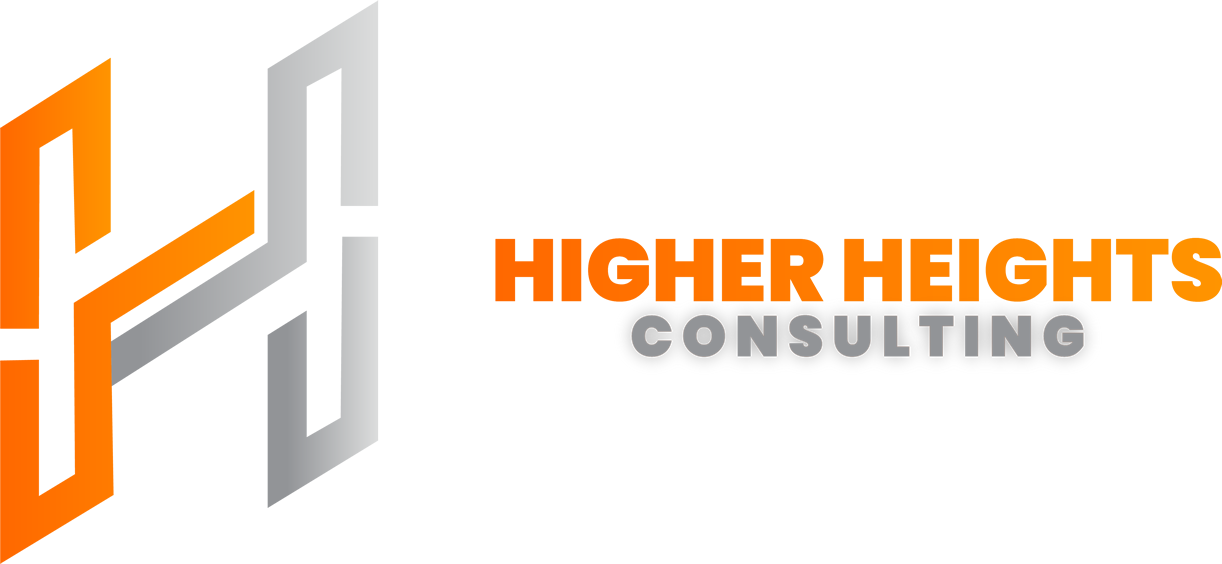Acquiring new clients is the foundation of business success, yet it remains one of the most challenging aspects of running a company. Businesses need a structured, proactive approach to client acquisition strategies that not only attract new customers but also build long-term relationships. Without a clear strategy, companies risk inconsistent revenue, inefficient marketing efforts, and missed opportunities for expansion.
At Higher Heights Consulting, we specialize in brand marketing strategy consulting, helping businesses implement practical, results-driven methods to gain and retain customers. With the right approach, companies can create sustainable growth by focusing on targeted, high-impact acquisition strategies. In this article, we explore seven proven strategies to help businesses expand their customer base while maintaining strong engagement and retention.
1. Define Your Ideal Client Profile
Successful client acquisition starts with a deep understanding of your target audience. Businesses that fail to define their ideal client profile often waste time and resources attracting the wrong customers. By identifying key characteristics—such as industry, company size, needs, and purchasing behavior—you can refine your outreach and focus on leads that have the highest potential for conversion.
A well-defined client profile allows companies to craft marketing messages that resonate with their audience, addressing pain points and offering tailored solutions. Instead of using a broad approach, businesses should develop personalized engagement strategies that highlight the unique value they bring to their ideal customers.
2. Leverage Relationship-Based Marketing
One of the most effective ways to acquire new clients is by building strong relationships with prospects before selling to them. People are more likely to do business with companies they trust, and a relationship-first approach fosters that trust over time. Instead of using aggressive sales tactics, businesses should focus on establishing credibility, engaging in meaningful conversations, and offering value before making a sales pitch.
Networking events, business conferences, and industry partnerships are excellent opportunities to connect with potential clients. Companies should also prioritize referral programs, as word-of-mouth recommendations are among the most powerful tools in client acquisition strategies. Encouraging satisfied customers to refer others not only increases credibility but also brings in high-quality leads that are more likely to convert.
3. Implement a Targeted Outreach Strategy
A broad, unfocused outreach strategy often leads to wasted resources, poor engagement rates, and low conversion results. Businesses must take a targeted approach by identifying high-potential prospects and crafting personalized messaging that speaks directly to their pain points and needs. Instead of casting a wide net, companies should focus on leads most likely to benefit from their offerings, increasing efficiency and the likelihood of successful client acquisition.
Strategic market segmentation is key to a targeted outreach strategy. By categorizing potential clients based on industry, company size, geographic location, or specific challenges, businesses can develop highly customized messaging that resonates with each segment. This segmentation ensures that outreach efforts remain relevant and meaningful, improving the chances of conversion.
Once the right audience has been identified, businesses must carefully plan their outreach methods. Cold outreach, including personalized emails, direct calls, and in-person visits, remains one of the most effective ways to connect with decision-makers.
However, for these efforts to be successful, outreach must go beyond generic, impersonal messaging. Instead, businesses should demonstrate an in-depth understanding of the client’s business needs and present a compelling case for how their solutions add tangible value. By offering data-driven insights, case studies, and industry-specific solutions, businesses can position themselves as knowledgeable and credible partners.
Beyond cold outreach, strategic partnerships and referral-based introductions can improve credibility and increase response rates. Clients are more likely to engage with a business that has been recommended by a trusted connection. Businesses should leverage existing relationships and networks to secure warm introductions, making initial outreach efforts smoother and more effective.
With expertise in brand marketing strategy consulting, Higher Heights Consulting helps businesses refine their outreach strategies, craft impactful messaging, and improve engagement rates. Our team ensures that each client acquisition effort is backed by thorough research, helping businesses increase their visibility and develop meaningful, long-term relationships with potential clients.
4. Offer Value Through Educational Content and Events
Providing value before making a sale is one of the most effective ways to attract and nurture potential clients. Businesses that position themselves as industry experts gain the trust of potential customers, making them more likely to engage, return, and refer others. Instead of focusing solely on selling products or services, businesses should aim to educate, inform, and provide solutions that their target audience finds useful.
Workshops, in-person events, and educational sessions tailored to the needs of potential clients help build credibility while also serving as a platform for engagement. These sessions allow businesses to showcase their expertise, demonstrate thought leadership, and establish trust with their audience. For instance, a telecommunications consulting firm might host a seminar on optimizing network efficiency, attracting business owners looking to improve their communication infrastructure.
Additionally, offering free training sessions, webinars, or live demonstrations is a great way to engage prospects and introduce them to a company’s services. A company specializing in direct marketing services could provide insights into effective lead-generation strategies, giving attendees actionable takeaways while subtly positioning their services as the ideal solution. These educational initiatives not only deliver immediate value but also create a natural pathway for future client engagement.
Beyond events, publishing insightful content in industry reports, whitepapers, blog articles, and case studies helps businesses reach potential clients by researching solutions. By providing well-researched, data-driven content that addresses common industry pain points, businesses can establish themselves as trusted advisors rather than just service providers. For example, a consulting firm might publish an industry report highlighting emerging trends in customer acquisition strategies, offering data-backed recommendations to help businesses optimize their growth efforts.
Another key educational approach is leveraging client success stories to illustrate the real-world impact of a company’s services. Case studies showcasing how a business successfully improved customer acquisition, streamlined sales processes, or increased revenue help potential clients visualize similar results for their own operations. Testimonials and success stories create credibility, making it easier for businesses to persuade potential clients to take action.
Businesses can create compelling educational content that nurtures leads and builds brand credibility. By using a combination of informative events, research-backed content, and success-driven storytelling, they can generate high-quality leads, increase engagement, and establish long-term relationships with potential clients.
5. Develop Strategic Partnerships for Business Growth
Strategic partnerships are a powerful way to expand reach and acquire clients efficiently. By collaborating with complementary businesses, companies can tap into new markets, cross-promote services, and establish credibility with new audiences. A well-structured partnership allows both businesses to benefit from each other’s customer base while providing enhanced value to clients.
For instance, a telecommunications company might partner with direct marketing services companies to create bundled offers that maximize visibility and sales opportunities. Similarly, professional service firms—such as legal or financial consulting firms—can collaborate on joint marketing initiatives that strengthen their market presence.
6. Focus on High-Touch Customer Engagement
A high-touch engagement approach ensures clients receive personalized experiences throughout their journey with your company. Businesses focusing on one-on-one interactions, tailored solutions, and proactive follow-ups see significantly higher conversion rates than those relying on automated, one-size-fits-all strategies.
Personalized engagement includes dedicated account management, where businesses assign representatives to build relationships with key clients. Additionally, proactive follow-ups—such as checking in after meetings, offering additional insights, or providing exclusive opportunities—help nurture prospects and increase the likelihood of conversion.
7. Continuously Measure and Optimize Client Acquisition Strategies
Sustained business growth is not just about acquiring new clients but also about refining and optimizing client acquisition strategies over time. Without a structured approach to tracking performance, businesses risk investing in ineffective tactics and missing key opportunities for improvement. Companies that regularly measure their marketing and sales efforts can make data-driven decisions that maximize efficiency, enhance conversion rates, and ultimately improve their bottom line.
Key Performance Indicators
Key performance indicators (KPIs) play a crucial role in assessing the effectiveness of client acquisition efforts. One of the most important metrics is the conversion rate, which measures how many leads successfully turn into paying clients. If the conversion rate is low, businesses must investigate whether the issue lies in targeting, messaging, pricing, or sales follow-up processes.
Customer Acquisition Cost (CAC)
Another critical metric is Customer Acquisition Cost (CAC), which helps businesses determine how much they are spending to acquire each new customer. If CAC is too high relative to revenue, it signals the need for more cost-effective acquisition strategies, such as referral programs, partnerships, or optimized outreach efforts.
Lead Response Time
Beyond these fundamental KPIs, lead response time is another essential factor in improving client acquisition. Studies have shown that businesses that respond to leads within the first five minutes have a significantly higher chance of closing deals compared to those that wait longer. Speed and efficiency in client communication can set a business apart from competitors and improve conversion rates dramatically.
Client Feedback
Regular analysis of client feedback and engagement trends also helps businesses refine their strategies. By gathering insights from prospective clients, businesses can identify what works and what doesn’t in their messaging, offers, and service delivery.
For example, if prospects frequently express concerns about pricing, businesses might consider adjusting their value proposition, offering flexible pricing structures, or creating bundled service packages to enhance appeal. Likewise, if clients show strong interest in a particular product or service, companies can double down on promoting it through targeted campaigns.
A/B Testing
Another critical aspect of client acquisition optimization is A/B testing. Businesses should consistently test different marketing approaches, outreach techniques, and sales strategies to determine what yields the best results. This could include experimenting with different email subject lines, call scripts, promotional offers, or networking approaches to see which method resonates best with the target audience. Small adjustments can lead to significant improvements in engagement and conversion rates.
Take Your Client Acquisition to New Heights
Effective client acquisition strategies go beyond short-term lead generation. They focus on relationship-building, targeted outreach, strategic partnerships, and data-driven optimization to create sustainable business growth. Companies that implement these strategies can expand their market presence, attract high-value clients, and achieve long-term success.
At Higher Heights Consulting, we are committed to helping businesses grow through customized client acquisition strategies. Whether through brand marketing strategy consulting, high-touch engagement, or industry partnerships, we provide businesses with the tools and expertise needed to elevate their success.
If you’re ready to boost your growth with effective client acquisition, contact Higher Heights Consulting today and discover how we can help you achieve lasting business success.

